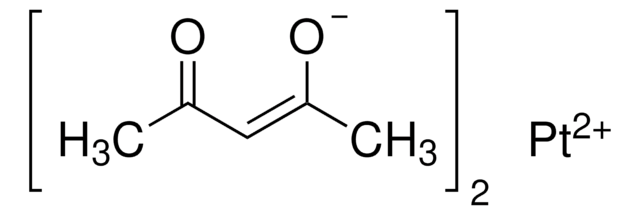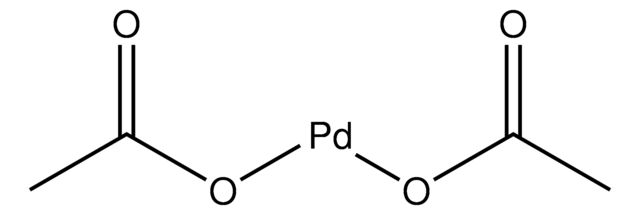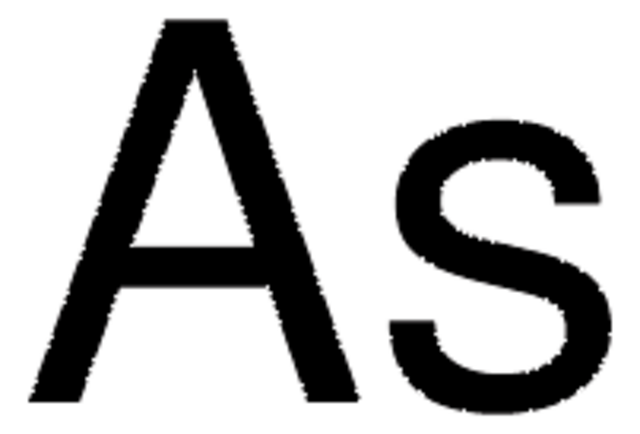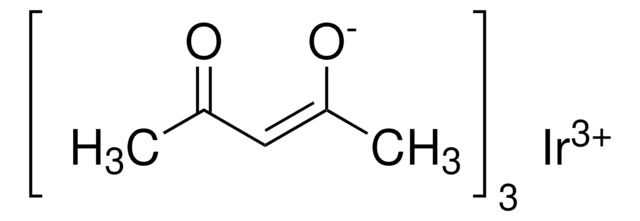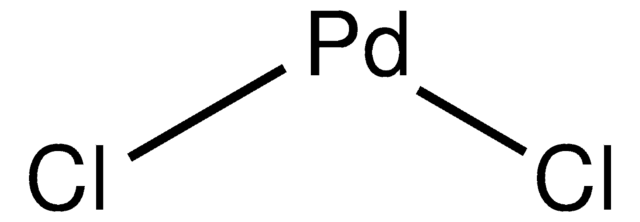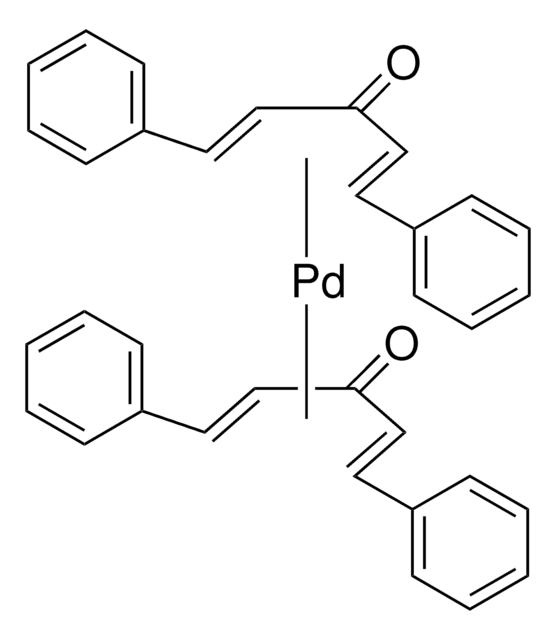209015
Palladium(II) acetylacetonate
99%
Synonym(s):
Palladium(II) 2,4-pentanedionate, Pd(acac)2
About This Item
Recommended Products
Quality Level
Assay
99%
form
powder
reaction suitability
core: aluminum
reagent type: catalyst
mp
200-251 °C (dec.)
SMILES string
CC(=O)\C=C(\C)O[Pd]O\C(C)=C/C(C)=O
InChI
1S/2C5H8O2.Pd/c2*1-4(6)3-5(2)7;/h2*3,6H,1-2H3;/q;;+2/p-2/b2*4-3-;
InChI key
JKDRQYIYVJVOPF-FDGPNNRMSA-L
Looking for similar products? Visit Product Comparison Guide
General description
Application
- Typical high-temperature organic solution phase protocol for the preparation of monodisperse CuPd alloy nanoparticles (NPs).
- Preparation of [(NHC)Pd(acac)L] (where L=Me, NHC = N-heterocyclic carbene) complexes. These complexes efficiently catalyze the Heck reaction of activated aryl bromides.
- As catalyst in the decarboxylative cross-coupling of arylcarboxylic acids with aryl halides.
Signal Word
Warning
Hazard Statements
Precautionary Statements
Hazard Classifications
Eye Irrit. 2
Storage Class Code
11 - Combustible Solids
WGK
WGK 2
Flash Point(F)
Not applicable
Flash Point(C)
Not applicable
Personal Protective Equipment
Choose from one of the most recent versions:
Already Own This Product?
Find documentation for the products that you have recently purchased in the Document Library.
Customers Also Viewed
Articles
The Heck reaction is the palladium catalyzed cross-coupling reaction between alkenes and aryl or vinyl halides (or triflates) to afford substituted alkenes.
Thin film photovoltaic devices have become increasingly important in efficiently harnessing solar energy to meet consumer demand.
Our team of scientists has experience in all areas of research including Life Science, Material Science, Chemical Synthesis, Chromatography, Analytical and many others.
Contact Technical Service

